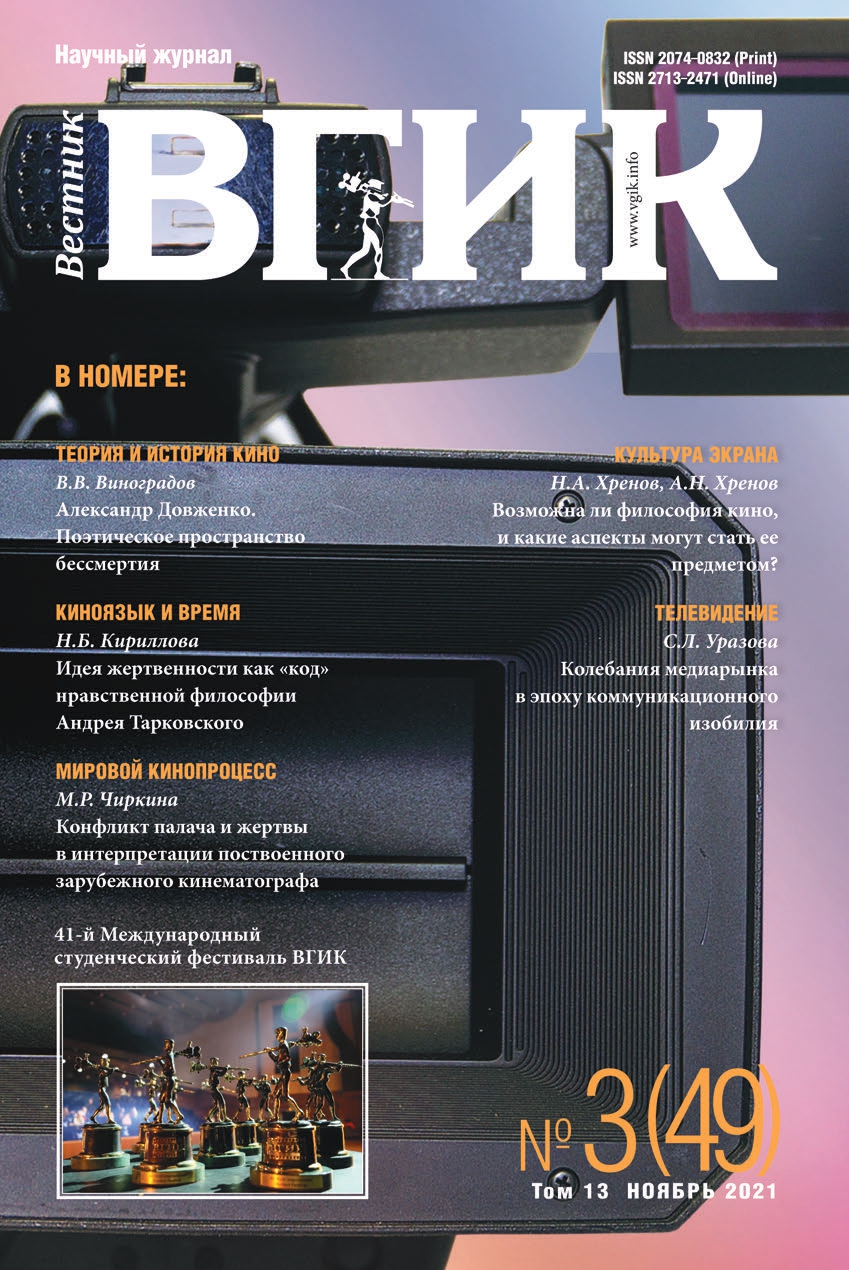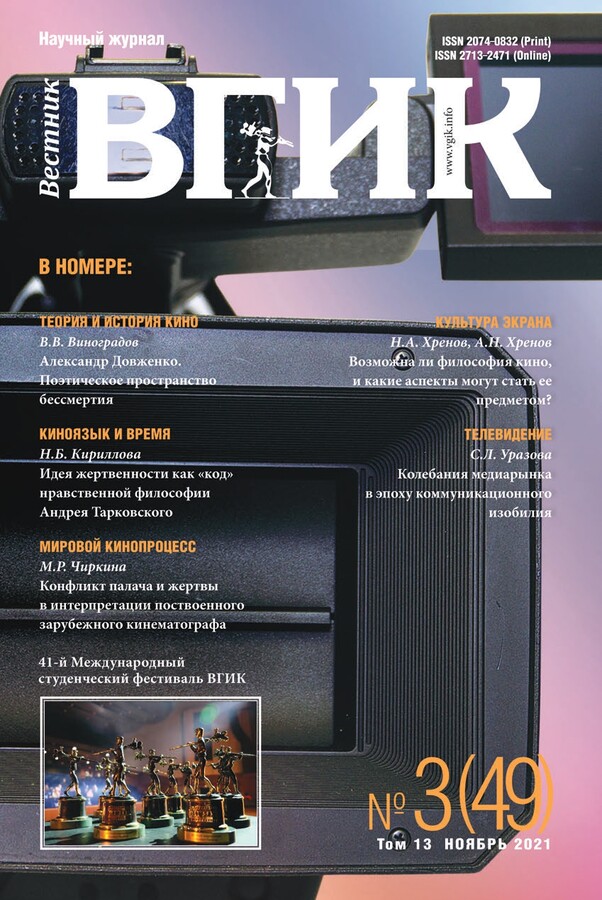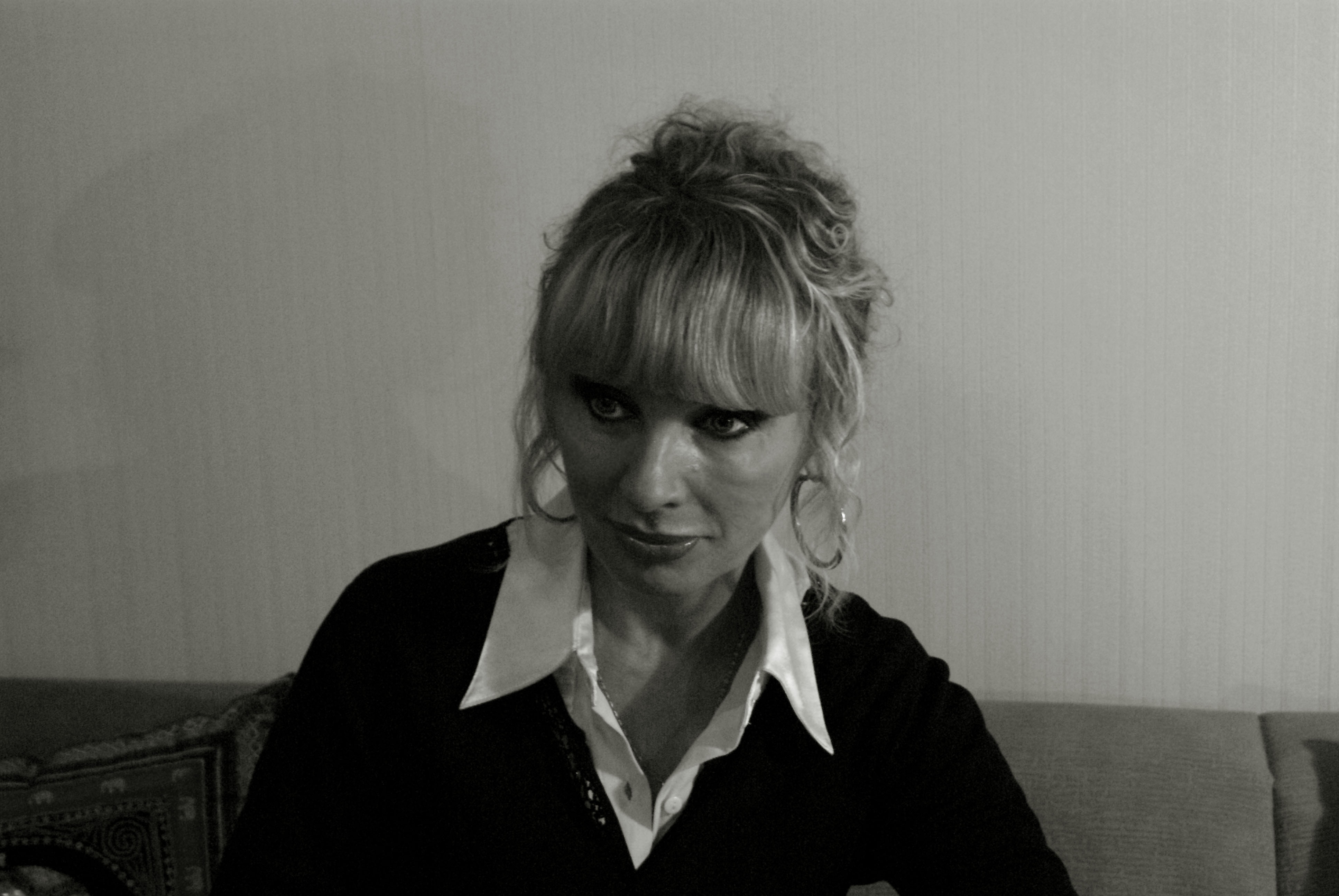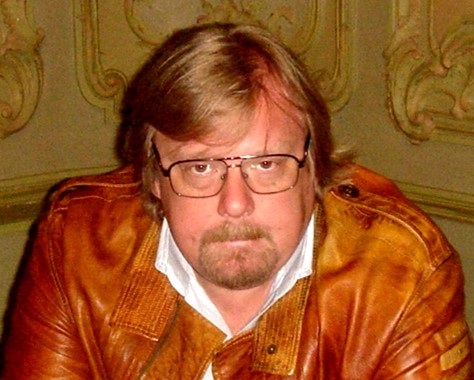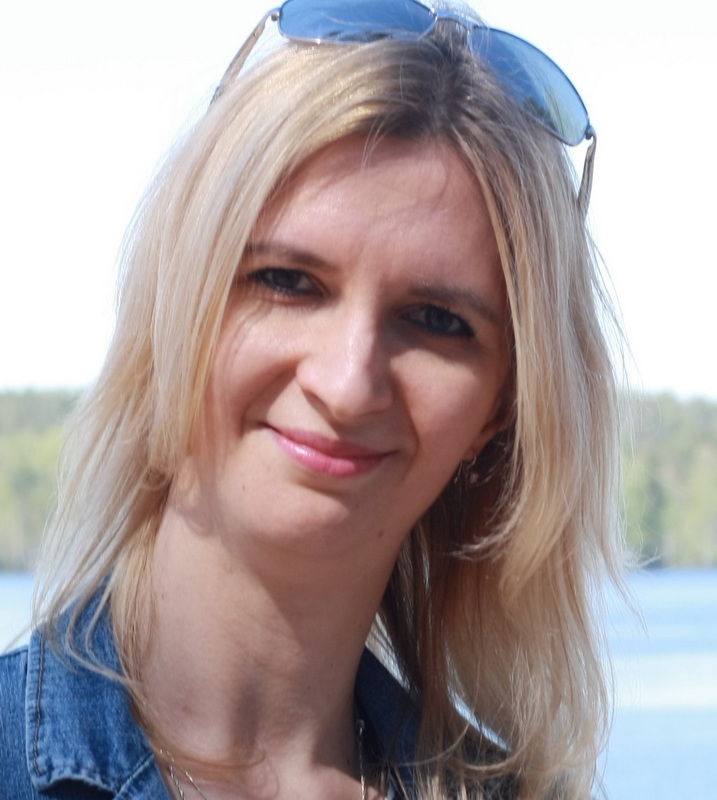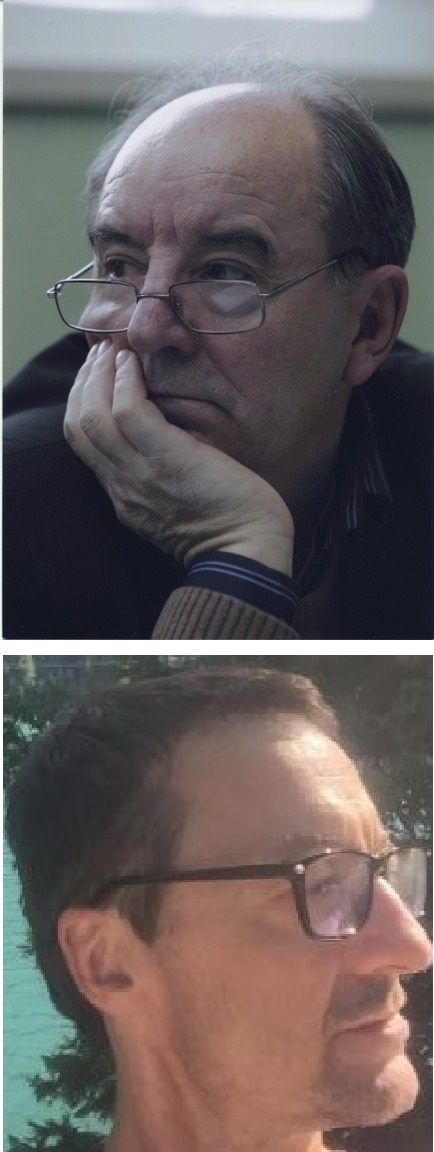Vestnik VGIK I Journal of Film Arts and Film Studies
Huge-theme peer-review journal in field of Art & Humanities.
Publisher
- S.A. Gerasimov Russian State Institute of Cinematography (VGIK)
Publications
- Quarterly since 2009.
Study fields
- Art Sciences (17.00.03 - Film, Television and Other Screen Arts)
- Philosophy (09.00.04 - Aesthetics)
Editor-in-Cheif
- Svetlana L. Urazova, Doctor Sc. in Philology, Associate Professor
Indexing
About
The academic journal “Vestnik VGIK” (Journal of Film Arts and Film Studies) is the leading scientific periodical issued by the Russian State Institute of Cinematography named after Sergei Gerasimov. This peer-reviewed journal is on the list of scientific periodicals and editions approved by the Supreme Attestation Commission (VAK) Presidium of the RF Ministry of Education and Science for publishing the major scientific results of dissertations for the advanced academic degrees of Dsc and PhD meeting the requirements of the Supreme Attestation Commission in the fields of Art History, Philosophy, Economics.
The journal publishes original research papers by scientists and educational workers, doctoral, post-graduate and undergraduate students, as well as information on VGIK faculties research activity, conferences and discussions, books, textbooks and teaching aids compiled by VGIK professors. Its target audience comprises scholars, university professors, school teachers, post-graduates, undergraduates and others interested in the developments of Russian cinema studies.
最新一期
卷 13, 编号 3(49) (2021)
- 年: 2021
- 文章: 16
- URL: https://journals.eco-vector.com/2074-0832/issue/view/4347
- DOI: https://doi.org/10.17816/VGIK133(49)
完整期次
CHRONICLE IN DETAIL | CURRENT EVENTS
Focus on tradition and innovation!
摘要
The article provides information about the 41st VGIK International Student Festival
 6-6
6-6


THEORY AND HISTORY OF CINEMA | AUDIOVISUAL ARTS
On the Essence and Relevance of the Work on Semantic Oppositions in Creative Writing
摘要
The article examines one of the most significant aspects of artistic text analysis promoted by Yuri Lotman: incorporating semiotic oppositions into the practice of analysis. We will attempt to research into this undoubtedly powerful resource and its potential based on the understanding of the advantage of using oppositions for answering the numerous questions posed by a particular cinematic text, no matter what type, genre or style it belongs to, in other words, we are talking about universal units and analytical mechanisms.
Any given artistic text always represents a certain hierarchy of spaces. These spaces are in turn associated with a specific type of boundaries. It means that if a text entails an array of spaces we are dealing with a similar array of borders, or more precisely, a hierarchy of borders. But even if everything happens in a single space, this does not mean that the number and significance of the borders are dramatically reduced. The system of boundaries can be extremely complex, bizarre and paradoxical, since it easily combines within itself. Along with explicit, ostensive physical boundaries, there are those of the opposite type: invisible, but particularly felt and experienced (quite often in modern films these sensations are not fixed by consciousness). Somewhere in this system of visible and invisible boundaries lies the main semantic boundary of the text, which eventually acquires (or is deliberately given) the mental form of one or another semantic opposition. And in this context, any text is also a hierarchy of semantic oppositions. The challenge, especially for a modern analyst, is that despite the active tendency associated with the conscious tricks of modern directing to knowingly and at the same time very accurately “lay” into the structure of the text and strategically convincingly implement the “wrong reading” of the text, to be so attentive and sensitive to the language of the text (and the text opens up exclusively in the horizon of the language), in order to avoid straying from the “path” and ending up in the “ditch” (not without the help of the director's discourse) and try to discover, explicate and single out the only basic semantic opposition, from the complex of others, which ensures the process of revealing the semantic potential of the text, even if it results in the discovery of the director’s concealed intention, as they say, to “throw off” the analyst “to the understudy”.
 8-24
8-24


Alexander Dovzhenko. Poetic Space of Immortality
摘要
The article focuses on the theme of death and rebirth in the works of A.Dovzhenko. In fact, the theme of death has been essential throughout the history of cinema. It is a matter of concern and representation in almost every film. But the authors do not always have an original concept of death. Among those for whom this topic is a through line are K.T.Dreyer, I.Bergman, A.Tarkovsky, J.-L.Godard, A.Sokurov, J.Cocteau. Death and resurrection play a key role in the films of A. Dovzhenko whose creation marked a milestone in the history of world cinema and set a special trend in its development. He has influenced a great many directors around the world, film historians and theorists in various countries keep dwelling on his work. Although Dovzhenko for many years is no more, his creative legacy is topical and relevant to this day. His art has been highly researched, still undoubtedly much yet remains to be revealed and studied, the theme of death and resurrection in particular. While the image of death was an important subject matter in Soviet art, the thanatological aspect as a topic in its own right in this historic period was frowned upon so that researchers have preferred to bypass this fairly specific question. The present paper is a fragment of a would-be book devoted to concepts and forms of representation of death in the world cinema. The paper focuses on analyzing Dovzhenko’s films "Earth" and "Shchors". It deals with the typology of death and the myth of resurrection, both important elements of the his philosophy of life. The director’s mindset is put in film research, philosophic and aesthetical perspectives.
 25-40
25-40


FILM LANGUAGE AND TIME | IMAGE GENESIS
Dziga Vertov's Work as Evaluated by Kazimir Malevich: Dynamic Abstraction in the Film “Man with a Camera”
摘要
The article analyzes the aesthetic motives of Dziga Vertov’s film «Man with a Movie Camera» (1929) in the context of Kazimir Malevich’s speculations on cinema and cinematic idiom. In the 1920s, the artist wrote several papers stating the formal decline of contemporary films. He projected hope that dismissing genre and plot clichés such as “inevitable” «kisses» and «happy ends», directors would focus their efforts on the abstract content of the film. Through the use of archival documents the author shows that while mapping out the concept of « Man with a Movie Camera» Vertov was on the same page with Malevich, placing particular emphasis on the «kiss» as a generic symbol of feature films. The documentary maker moves from a «kissless» film, as Malevich puts it, towards developing the dynamic content of the film. Passing from the concrete to the abstract and to futuristic images Vertov fills up the composition of «Man with a Movie Camera» with an elaborate content based on a number of associations and editing rhymes. Tellingly Malevich calls Vertov virtually the only filmmaker in the world set to portray the true reality. And he calls «Man with a Movie Camera» the key work on the way to creating Suprematist cinema. The author of this paper proves that Dziga Vertov was under the great artistic influence of Malevich and contemplated his works in line with non-objective art.
 42-51
42-51


The Concept Of Self-Sacrifice In The Philosophy Of Andrei Tarkovsky’s Work
摘要
The article analyzes the fundamentals of the moral philosophy of Andrei Tarkovsky, a unique Russian film director, thinker and art theorist whose films are recognized as masterpieces of screen culture along with the works of M.Antonioni, I.Bergman, L.Bunuel, L.Visconti, A.Kurosawa, F.Truffaut, F.Fellini, S.Eisenstein and others. The subject under study is the idea of self-sacrifice in Tarkovsky’s works as a distinctive “code” of his spiritual heritage. A believer, he sought in art, as well as in the Bible, answers to the question "how to live?" Creator of an original artistic world, Tarkovsky dwelled upon such vital hilosophical categories as “life and death”, “faith and faithlessness”, “man’s spiritual existence”, “problems of conscience”, “self-sacrifice”, etc. This is evidenced not only by his screen works, but also archives, diaries and theoretical works, by use of which the author provides their own interpretation of the philosophy of Tarkovsky’s work focusing on the idea of self-sacrifice and the specifics of its artistic interpretation. The artist's mission is not only to strive for the insight into being but also to influence the spiritual development of a person in order to contribute to the improvement of the wide world. Andrey Tarkovsky had made his contribution to the harmonization of the human existence and the world, which 35 years after the great artist was gone has become due to globalization and digitalization much more open to dialogue. But when it comes to moral level it’s an open question…
 52-67
52-67


READING-ROOM | BOOK SHELF
The Library VGIK
 68-68
68-68


PERFORMANCE | ART OF PRESENTATION
Mythologeme as a Means of Artistic Expression in Contemporary Russian Cinema
摘要
The article discusses the importance of the audience response to current film premieres appealing to all ranks of viewers, which is largely due to the fact that, given the massive scale of the cinema art and provided that the subject matter is in tune with major concerns of general public, the releases of a number of films have caused a fairly wide resonance. Sophisticated use of instruments of cinematic expression allows for involvement of the viewer into the film events making him feel like a co-author of the film.
The piece analyses Alexei Krasovsky’s film "The Collector" (2016), example use of cinematic expressive means for crafting images properly reflective of the current state of society which permits an in-depth conversation with the viewers, possible if the insight into aspects of interaction between the individual and the society goes with the use of artistic devices appealing to the collective unconscious.
One of the essential factors in this regard is the methodology of the impact on the viewer by itself. The viewer’s introduction into the artistic space of the film allows for a transformation not by means of a logical and reasoned debunking of a myth but through the immersion of the viewer’s mind into a state close to that experienced by the characters. Cinema during its existence has more than once proved its leading role in the construction of the public conscience. The exposure of the film art and the modern tendency to opt for visual representation instead of the verbal one make cinema a powerful means of influence upon the process of developing a new social order. The audience’s interest is currently determined by the needs of the modern society, which, on the other hand, nurture the artist's capability to comprehend reality.
 70-81
70-81


The Сoncept of Sound Expression in Viktor Kosakovsky’s Documentaries
摘要
The article presents a critical insight into the concepts of sound expression in documentary films by Viktor Kosakovsky, an ace of Russian modern documentary filmmaking. All the happenings in his films integrating fiction and nonfiction are in a way directed by real life. He makes use of cinematic reality as a medium for presenting his philosophy. V.Kosakovsky’s works widely screened at international film festivals and time and again Oscar nominees, are notable for their imagery, symbolism and particular sound intonation.
The relevance of the present study stems from the fact that modern techniques used in sound engineering of feature documentaries are insufficiently explored, for all that modern sound technologies open up far larger expressive opportunities for the author’s brainchild.
Thus, Viktor Kosakovsky in each film applies pioneer techniques pushing boundaries of classical ideas about the sound solutions in documentary filmmaking. An important aspect of the science-based research of the subject is the specification of trending techniques of the sound partition shaping in modern sound design of documentaries. The scientific novelty of the essay is provided by theoretical and case study of the filmographic material with regard to the artistic importance of sound design.
The films under review were chosen so as to demonstrate the best sound solutions involving the use of specific techniques. The author concludes that for Kosakovsky work with soundscape is a major asset to developing his own style of revealing the film footage. By means of inventive sound patterns joined to the common documentary shooting technique based on observation the director finds new ways of presenting the real world.
 82-94
82-94


SCREEN CULTURE | CULTURAL STUDIES. PHILOSOPHY
Is Film Philosophy Possible and What Aspects of Cinema May Become its Subject?
摘要
The use of a complex methodology in cinema studies is constantly being discussed. There are researches on sociology, psychology, aesthetics and semiotics of cinema. The movement towards an integrated methodology makes the idea of a philosophy of cinema relevant. The synthesis of different academic approaches in cinema studies can be only understood in terms of philosophy. Each discipline sees and is able to explain through cinema merely what is connected with its agenda. An appropriate methodology needs to be developed so that these different aspects of cinema are transformed into the elements of a uniform system. The article analyzes the philosophical approach to cinema studies of Gilles Deleuze, who made cinema instrumental in examining time. Deleuze’s work in question explores Henri Bergson's argumentation of dramatic changes in the perception of time. It would seem that it was cinema, with its ability to capture the dynamism of social life, that should have demonstrated the meaning of such changes. Bergson understood, quite traditionally, the ability of cinema to recreate time in the forms of space. Deleuze shares the conventional point of view on the fate of philosophy, which argues that previous philosophy disappears and, dissolving in art, exists only in artistic manifestations.
The authors conclude that:
1. The intrusion of philosophy into cinema dictates the need to develop a theory as a mediator between film philosophy and filmmaking.
2. When studying cinema through other liberal sciences, it is necessary to avoid discussing specific aspects and strive for a systematic consideration.
3. The study of cinema from the point of view of various schools of thought, does not exclude finding points of contact between them.
4. The need for an integrated methodology in studying cinema involving philosophical angles is also dictated by the rapid development of technology. It is necessary to take into account what has already been accomplished in the philosophy of technology.
 96-114
96-114


WORLD CINEMA | ANALYSIS
The Victimizer-Victim Conflict as Represented in the Foreign Post-War Cinematograph
摘要
The article explores topics of the victimizer-victim conflict as part of the World War II events. Exemplified by films of various filmmakers representing this conflict, the author interprets the relation between the victim and the victimizer in terms of social reflections and examines the role of historical memory, which offers scope for versatile plotting. Dictatorial regimes are a fertile field for toxic relationships in society. Diametrically opposite positions of victimizer and victim hold something that provides a pernicious and unbreakable bond between them. Their dualism is fraught with an inner transformation, an about-face actualizing its devastating effect and urgency in time of peace as well.
Understanding the nature of this paradoxical victimizer-victim relationship and the socio-psychological causes of this dangerous phenomenon provides a more objective insight into this ambiguous situation. Characters who find themselves at the changing point in history and their personal choices are always of great interest. The victims striving for revenge turn into persecutors of their victimizers. All round imaging of the historical time in each film reveals the mental complexity of the characters and renders it impossible to assess the causes of the global tragedy of the past in present-day terms.
The victimizer-victim conflict is analyzed with reference to historical and socio-psychological aspects of the Nazi ideology. The religious and the Freudian ones are out of scope in this paper. A non-conventional, divergent approach to the topic in the films reveals the past reality through the characters taken from life – participants and witnesses of those tragic events. Assessment of the past sheds light on the complex and seemingly defying any logic problematics of the said conflict and allows for understanding its socio-psychological origins and motives, which breaks new ground for screen writers in creating the characters of victimizers and victims.
 116-131
116-131


ЧИТАЛЬНЫЙ ЗАЛ | КНИЖНАЯ ПОЛКА
The Library VGIK
 132-132
132-132


TELEVISION | DIGITAL ENVIRONMENT
Fluctuations in the Media Market in an Era of Communication Abundance
摘要
The accelerated development of innovative technologies raises the issue of assessing the state of the media market, taking into account its current transformations. However, it is difficult to identify the nature of the changes in the media sphere without reference to hindsight as the starting point of the transformation. The article substantiates a number of transformational factors that have become landmarks amid the fluctuations of the media market, resulting in its fundamental modification.
The article highlights the relationship between the media system and the audience emerging in the digital era, modified by the introduction of digital technology. But the phenomenon is viewed in terms of the Forth Industrial Revolution and the transformation of socio-economic reality. The author quotes the Russian physicist S.P.Kapitsa who believed that progress was not determined by the population size, but by the multiplicity of communicative interaction, that is, by the dissemination of experience and knowledge. The processes of communicative abundance in media space based on mass and media communications are substantiated. The analysis is based on specifying the milestones, referred to as media turnarounds, which have influenced media market and led to reforms in Russian media industry.
The first media turnaround was the entry of Russian media into the market followed by the introduction of the Internet into media space, which led to the emergence of new media and of amateur media producers. The emergence of social media heralded another media turnaround. The next media turn will be the introduction of Artificial Intelligence (AI) and Virtual Reality (VR) technologies. The visualization of media space is becoming the leading trend, while digital TV now follows the audience, in accordance with the thesis “Consumer is King”.
 134-138
134-138


SCIENCE LABORATORY | YOUNG SCIENTISTS’ RESEARCH
Modern Films In The Assessment Of Future Filmmakers
摘要
Fragments Of Articles By The Winners Of The VGIK Film Critics Competition Are Published
 139-145
139-145


XPOHИКА В ДЕТАЛЯХ | АКТУАЛЬНОЕ СОБЫТИЕ
Artistic Space In Documentary Films (According To The Results Of The XVII Kazan International Muslim Film Festival)
摘要
The Kazan International Muslim Film Festival (KMFMK) has been held in the capital of Tatarstan since 2005. The first festival was organized on the initiative of the Council of Muftis of Russia, the Federal Agency for Culture and Cinematography of the Russian Federation, the Ministry of Culture of the Republic of Tatarstan with the support of the President of the Republic of Tatarstan. KMFMK is held under the motto "Through the dialogue of cultures to the culture of dialogue".
 146-151
146-151


SUMMARY | PRESENTATION OF AUTHORS
Summary
 152-157
152-157


RECOMMENDATIONS AUTHORS
Recommendations for Authors
 158-160
158-160










